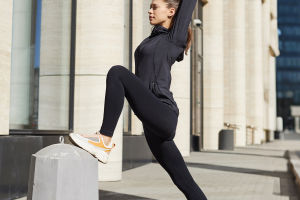Have you ever wanted to start working out but felt limited by not having equipment or a gym membership? Good news—we don't need any fancy tools to get fit! Our own body is one of the best training tools available.
Today, let's explore how we can use bodyweight exercises to build strength, improve endurance, and boost flexibility—anytime, anywhere. Whether we're at home, in the park, or on vacation, fitness is always within reach!
Why Choose Bodyweight Training?
Bodyweight exercises offer many unique benefits:
• Convenience: We can train anytime without relying on equipment.
• Functional strength: These movements mimic real-life activities, improving overall fitness.
• Scalability: Exercises can be modified to suit beginners or advanced athletes.
• Improved mobility: Many bodyweight moves enhance flexibility and balance.
Dr. Laura Kim, a certified exercise physiologist, explains, "Bodyweight training helps build a strong foundation for all types of movement. It's ideal for beginners and complements more advanced programs."
How to Start?: Key Principles
Before diving into exercises, here are a few simple principles to help us get the most from bodyweight training:
• Focus on form: Quality matters more than quantity.
• Progress gradually: Start with easier variations and build up.
• Listen to our body: Rest when needed, and avoid pushing through pain.
• Stay consistent: Aim for 2-4 sessions per week to see results.
Dr. Sarah Bennett, a personal trainer, notes, "Consistency and good form will always lead to better results than occasional, rushed workouts."
Essential Bodyweight Exercises for Beginners
Here's a list of beginner-friendly exercises we can include in a well-rounded routine:
1. Squats
- Target: Legs, hips, core
- How to do?: Stand with feet shoulder-width apart. Lower hips back and down as if sitting into a chair, then stand back up.
2. Push-Ups
- Target: Chest, shoulders, arms, core
- How to do?: Keep body in a straight line from head to heels. Lower chest toward the floor, then push back up. Start with knee push-ups if needed.
3. Glute Bridges
- Target: Glutes, lower back
- How to do?: Lie on your back with knees bent. Lift hips up, squeezing glutes at the top.
4. Plank
- Target: Core, shoulders
- How to do?: Hold a straight line from head to heels, resting on forearms and toes. Engage core and maintain for 20-60 seconds.
5. Lunges
- Target: Legs, glutes, balance
- How to do?: Step forward with one leg, lower hips until both knees are bent at about 90 degrees. Push back to standing and repeat on the other side.
Sample Beginner Workout Routine
Ready to put it all together? Here's a simple 15-minute bodyweight circuit:
• 15 squats
• 10 push-ups
• 15 glute bridges
• 30-second plank
• 10 lunges per leg
Repeat the circuit 2-3 times, resting 30-60 seconds between rounds. Finish with gentle stretching to cool down.
Tips to Progress Over Time
As we grow stronger, we can make our workouts more challenging by:
• Increasing repetitions or sets
• Reducing rest time between exercises
• Trying advanced variations (e.g. jump squats, full push-ups, side planks)
• Combining movements into more dynamic flows
Dr. Emily Chen, a fitness coach, suggests, "Small, consistent improvements—like adding one more rep or holding a plank for 10 extra seconds—keep progress steady and sustainable."
Common Mistakes to Avoid
To stay safe and effective, here are a few things we should watch out for:
• Skipping warm-up and cool-down: Always prepare the body and stretch after.
• Rushing through movements: Focus on control and alignment.
• Ignoring core engagement: Keep the core active in all exercises to protect the spine.
• Overtraining: Rest days are important for recovery and growth.
Let's Embrace Bodyweight Fitness!
So Lykkers, are you ready to start your bodyweight training journey? Remember—fitness is about progress, not perfection. The beauty of bodyweight exercises is that we can begin right where we are, with no special equipment required.
We encourage you to try the sample routine this week and experience how empowering it is to use your own body for strength and fitness. And if you discover a favorite move or personal tip, share it with us! Let's support and inspire each other in building strong, capable bodies—anytime, anywhere.


